Sealing the promise of health for all in Somalia on Universal Health Coverage Day

20 December 2020 – On 12 December 2020, in line with global celebrations of Universal Health Coverage (UHC) Day, the World Health Organization (WHO) in Somalia joined the Federal Government of Somalia, the United Nations Children’s Fund (UNICEF) and United Nations Population Fund (UNFPA), to raise awareness about the importance of achieving UHC in fragile and vulnerable states, with the aim of ensuring health for all across the country for everyone, everywhere.
At an event hosted in Mogadishu by the Federal Ministry of Health and Human Services of Somalia, with support from WHO, key representatives from the Federal Government, Federal Member States, Members of Parliament, other government agencies, international and donor community, civil society and representatives of United Nations agencies participated. The aim of the event was to raise awareness of the need to build strong and resilient health systems in Somalia and to mark the anniversary of the United Nations historic and unanimous endorsement of UHC in 2012 calling the countries to provide affordable, quality health care to every person, everywhere (A/RES/74/2).
Befitting the theme of 2020‘s UHC Day- “Health for All: Protect Everyone” the event preceded with a discussion on the UHC road map for Somalia, progress achieved to date and how the government, United Nations agencies and civil society could work together to improve health service delivery, ensure access to care, as well as build stronger health systems as the country recovers from the pandemic of coronavirus disease (COVID-19).
During the event, Dr Fawziya Abikar Nur, the Federal Minister of Health and Human Services of Somalia, said that UHC would strengthen health systems, particularly after having witnessed the impact that health emergencies, such as the COVID-19, had had on the social and economic development of a country.
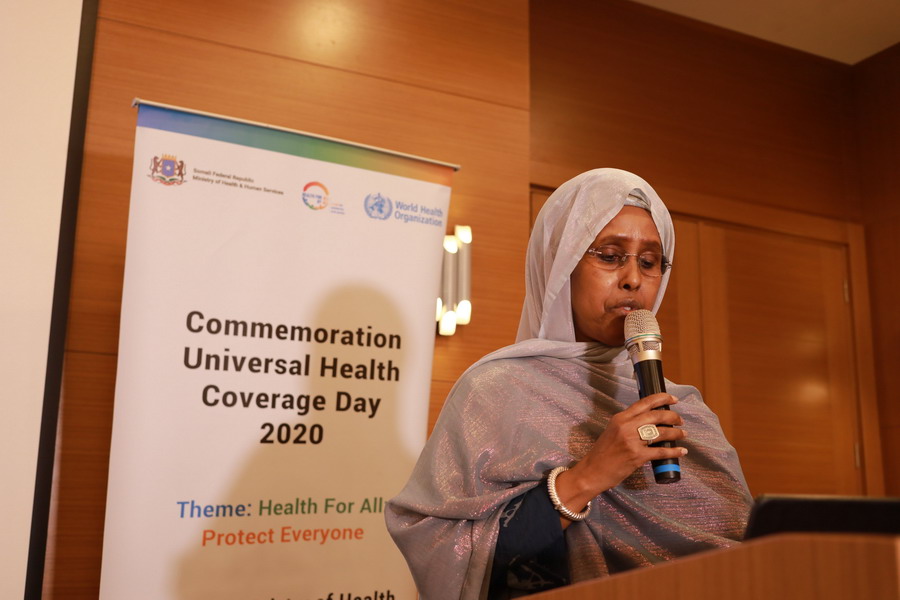 Dr Fawziya Abikar Nur, the Federal Minister of Health and Human Services of Somalia
Dr Fawziya Abikar Nur, the Federal Minister of Health and Human Services of Somalia
On behalf of United Nations agencies in Somalia, the acting United Nations Resident Coordinator and the Resident Representative of UNDP Mr Jocelyn Mason spoke on the occasion.
WHO Representative for Somalia Dr Mamunur Rahman Malik emphasized that UHC Day was a reminder to all that health remains a right for everyone and that health care should be affordable and accessible for every citizen in every country. Dr Malik reminded all that increased public financing, monitoring out-of-pocket catastrophic expenditure and government ownership were all critical for achieving UHC.
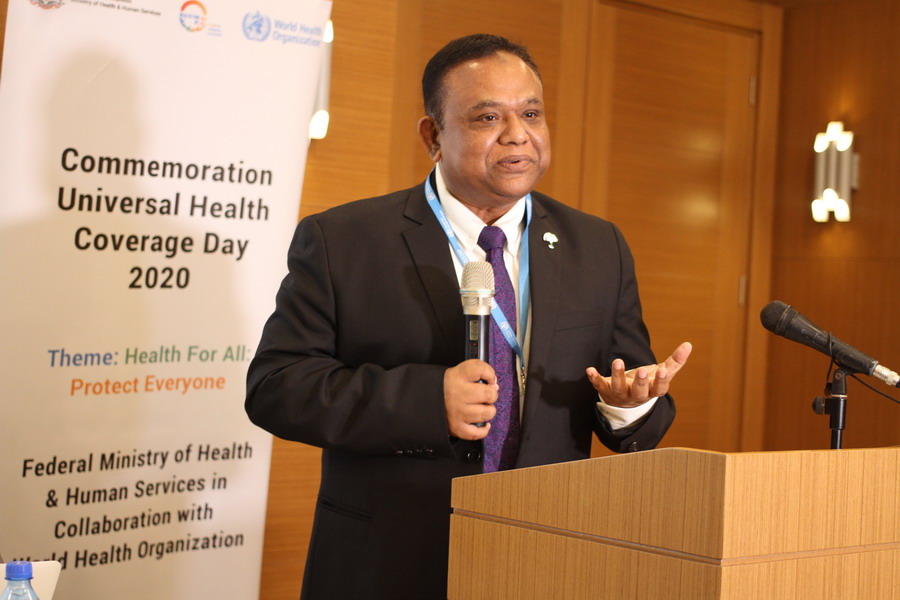 WHO Representative for Somalia Dr Mamunur Rahman Malik
WHO Representative for Somalia Dr Mamunur Rahman Malik
The WHO Representative also emphasized that health services in fragile states like Somalia should be designed and organized in a way that made health care accessible to vulnerable populations, especially internally displaced persons (IDPs), refugees, migrants and people living with disabilities who were often marginalized and excluded from social safety nets.
How the concept of UHC came about
Inspired by and as a follow up to an initial United Nations resolution passed in 2015 on making progress towards the 2030 Agenda for Sustainable Development (A/RES/70/1), the United Nations General Assembly convened a high-level meeting on UHC on 23 September 2019. Held under the theme “Universal Health Coverage: Moving Together to Build a Healthier World,” this meeting aimed to accelerate progress toward UHC, particularly with regard to financial risk protection and access to affordable, quality essential health-care services, in efforts to leave no one behind in the field of health.
Taking the opportunity to build back better
In 2020, in response to the swiftly-spreading COVID-19 pandemic in Somalia, the Federal Government of Somalia and partners launched an urgent and robust response to ensure the country was able to test, track and monitor and care for cases of COVID-19.
Taking into account lessons learned and best practices used to curb the spread of the COVID-19, the Government and partners agreed to use the response to the pandemic as an opportunity to build back better, and recover better and stronger. Since primary health care is the backbone of UHC, interventions to strengthen access to health at community and household levels will be prioritized.
Renewing commitment to UHC
Speaking on behalf of United Nations agencies, particularly UNICEF, UNFPA and WHO, the Resident Representative of UNDP and the acting United Nations Resident Coordinator Mr Jocelyn Mason reiterated that the UN system would redouble its efforts to support the Government of Somalia’s vision and desire to achieve UHC in the country.
He also announced a 3-point plan that UNICEF, UNFPA and WHO in Somalia are partnering and committing to in 2021 to take meaningful strides towards UHC. The 3 agencies, as the principal signatories of Global Action Plan for Healthy Lives and Well-being, have pledged to work together to improve health in 3 critical areas which will be pivotal in reducing deaths from preventable causes, especially among children and women in the country:
First, the 3 agencies plan to scale up the availability of oxygen at the primary health care level, leveraging on the COVID-19 response.
This intervention will save the lives of at least 20-30% of an estimated 15 000 children aged under 5 who lose their lives to pneumonia every year. The intervention will also contribute to the WHO/UNICEF’s Integrated Global Action Plan for Prevention of Diarrhoea and Pneumonia by 2025. Scaling up the availability of oxygen will also improve emergency obstetric care across the country.
Second, in honour of health personnel in Somalia, and given that 2021 has been designated as the “International Year of Health and Care Workers”, UNICEF, UNFPA and WHO will invest in the readiness, education and learning of the health workforce, particularly health workers and midwives at the community level.
These investments have the potential to change the health situation, public and private health systems, and human rights in Somalia forever. Midwifery, in particular, provides a strong opportunity to impact the health and well-being of women and children.
Third, the 3 agencies will strive to ensure every child is immunized against common and preventable childhood diseases, as immunization is a basic pillar of child survival and a strategy to end disease outbreaks.
While Somalia has made some progress in immunization coverage over the past 5 years, vulnerable children living in urban, remote rural and nomadic communities are missed regularly. Furthermore, the 2020 Health and Demographic Survey report for Somalia indicates that only 11% of children aged 12–23 months had received all basic vaccinations. By intensifying cold chain expansion, community engagement and outreach services, as part of the newly updated essential package of health services meant for all, this situation can be turned around. These efforts would also contribute to a successful reproductive health programme aimed at reducing high maternal deaths in the country.
A pledge of health for all and protection for all sounds like a colossal undertaking, and is by no means a small feat. However, with partnerships and action, it can be achieved. As Somalia begins its new journey to rebuild its health systems in the aftermath of the pandemic, on behalf of the UN, Dr Malik urged all health and development partners, civil society and other actors to collaborate, forge strong partnerships, and align their work towards attaining the dream of UHC in Somalia, even in the most fragile and vulnerable settings.
Somalia, United Nations renew promise to deliver health for all
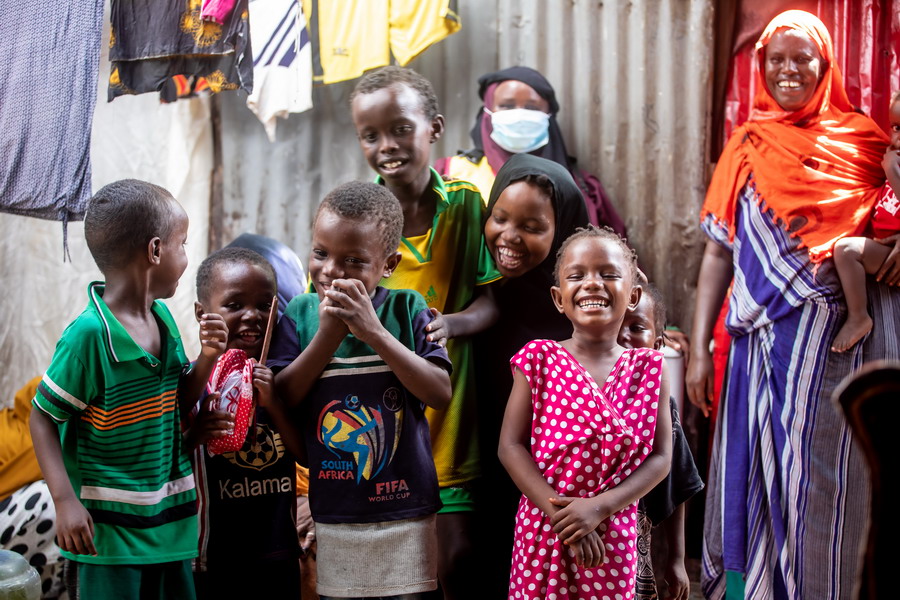
Mogadishu, 12 December 2020 – On International Universal Health Coverage Day, the Government of Somalia, in collaboration with the United Nations Children’s Fund (UNICEF), United Nations Population Fund (UNFPA), World Health Organization (WHO) and partners, renewed its commitment to supporting countries accelerate efforts to provide universal health coverage (UHC) for all. They also urged other health and development partners to do the same.
“Close to 2.6 million of the most vulnerable Somalis are in need of health care,” said Dr Mamunur Malik, WHO Representative for Somalia. “By renewing our commitment to work closely together as agencies and with the Government, streamlining our efforts, and using innovative measures to provide health care and social security for all, we can ensure Somali households, particularly vulnerable populations, have access to life-saving health services. Somalia has already created a strong foundation of health personnel, some of whom deliver life-saving vaccines to children at household level, respond to health emergencies and support women of reproductive age among other work they do. We just need to support the country to build on existing systems and infrastructure – but we must take bold actions together, and now, to build back better and stronger and advance UHC.”
UHC ensures all people everywhere, no matter where they live, have equitable access to quality health services they need, without suffering financial hardship. It will strengthen health systems so that people can access vital health services even amid health emergencies, such as the ongoing COVID-19 pandemic, and will enable Somalis to access health services based on their needs, not on their ability to pay.
Given the challenges Somalia’s nascent health systems have faced, the country has made incredible progress in recent years, also thanks to support from partners. For instance, in less than 20 years, the under-5 mortality rate decreased by more than 27%.
Investments made in training and supporting health care workers have also paid off: the number of deliveries by skilled birth attendants has increased from 22% in 2010 to an estimated 29% in 2017, and around 650 000 children are receiving life-saving vaccines every year.
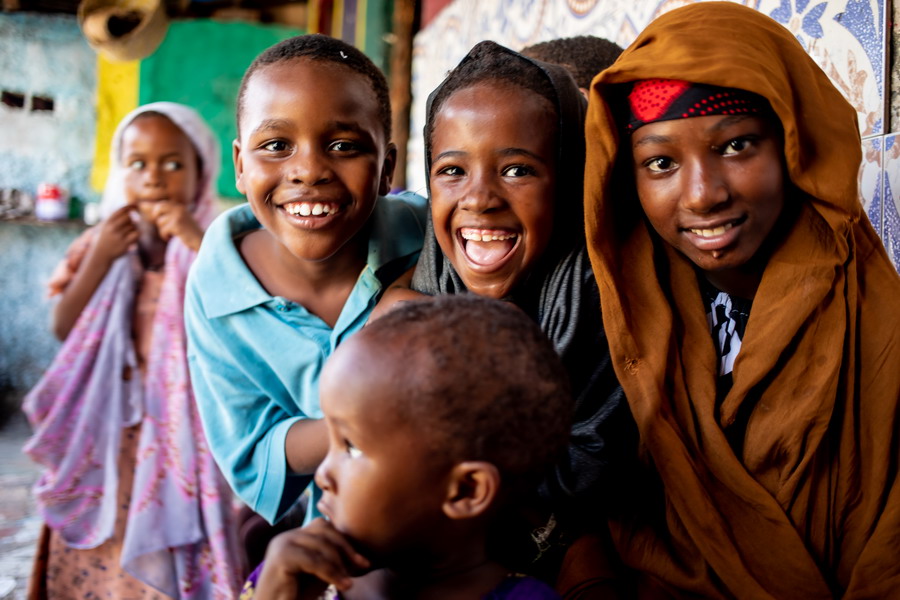
Additionally, findings from the Somali Health and Demographic Survey 2020 show a reduction in maternal mortality (from 732 to 692 deaths per 100 000 live births). However, they also show that the uptake of antenatal care and delivery at health facilities is still low. Only 24% of women made 4 or more visits to a health facility in their last pregnancy, and 21% delivered at a health facility. These 2 indicators are fundamental to the improvement of maternal health outcomes and to the success of the UHC at large.
“While some progress has been made, still too many disadvantaged Somali women and children are dying every day, largely from preventable causes,” said Jesper Moller, acting Representative, UNICEF Somalia. “Most of these deaths could have been avoided if vulnerable communities had access to basic health services. Therefore, we commend the Somali Government for prioritizing the most vulnerable in their efforts to achieve UHC for all. Providing quality health care for children, especially during their first 2 years in life, will help them survive and thrive so they can reach their full potential.”
“Somalia is making strides towards ensuring that no woman or baby dies at birth, which is reflected in the reduced maternal mortality rate – that has been one of the worst worldwide. We will continue to work with the Federal Government of Somalia to ensure mothers feel safe while delivering their babies in Somalia,” said Anders Thomsen, UNFPA Somalia Representative.
The Somali Government has already taken concrete steps to roll out UHC, in collaboration with United Nations agencies and health partners. This progress includes the development of a roadmap to advance UHC, address health emergencies and promote healthier populations. Somalia is also in the process of revising an essential package of health services that meets Somalis’ most pressing health needs and that every Somali will have access to one day.
For more information, contact:
Fouzia Bano
WHO Somalia
+92 333 3352 749
Dheepa Pandian
UNICEF Somalia
+252 613375885
Pilirani Semu-Banda
UNFPA Somalia
+254 734 500 439
Protecting children in Kismayo from measles: funding from anticipatory action framework proves impactful
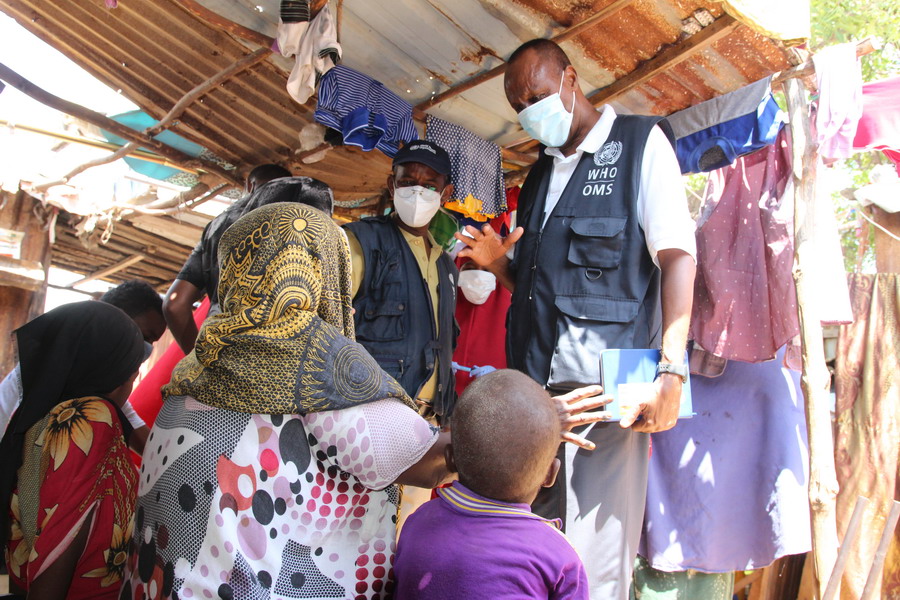 Health teams explain the benefits of vaccination to a mother in Kismayo, October 2020
Health teams explain the benefits of vaccination to a mother in Kismayo, October 2020
19 November 2020 – In Kaamjiron village in Kismayo, Jubaland State, a young farmer and mother of 8, Khadijo Mohamed solemnly reflects about her children’s health. Khadijo has already lost 2 children to measles, and now a third, their one-year-old son Abdi has the same symptoms her other 2 children did – a cough, fever and rash.
“I rushed my child to the hospital because I know the signs and symptoms of this disease. I saw this happen in 2013 to 2 of my children and now, I want to protect my son,” says Khadijo.
She explains there are limited health services in her village, which proves to be difficult for families living in Kismayo. Despite this, there are stakeholders monitoring and responding to the situation.
Outbreak of measles in Jubaland: moving fast and first
Between the epidemiological weeks of 15 and 23 in 2020, the state surveillance data gathered by the Early Warning and Alert Response Network (EWARN) detected a large number of suspected measles cases in Jubaland State. This increase in number triggered a field investigation by the World Health Organization (WHO) during the first week of July. The outbreak was laboratory-confirmed following the detection of the measles IgM by enzyme-linked immunosorbent assay (ELISA).
Somalia responds swiftly to measles outbreak in Jubaland State
Offering children health services in hard-to-reach locations
Following the confirmation of the outbreak, a series of coordination meetings were held, microplans were developed and using the surveillance data, a plan for organizing a mass measles campaign was developed, targeting 59 642 children from 6 months to 5 years of age in Kismayo district.
To ensure Somali children in Kismayo, a hotspot for measles, have access to immunization services to stop the spread of measles, the Federal Ministry of Health and Human Services (MOH) and State Ministry of Health of Jubaland have worked together to coordinate the outbreak response activities. They have worked in collaboration with WHO and the United Nations Children’s Fund (UNICEF) to offer outreach campaigns delivering measles vaccinations to children from 2000 outreach/vaccination posts.
From 7 to 11 October 2020, they partnered again to conduct a measles campaign in Kismayo, where more than 56 500 (95%) out of the targeted 59 642 children received measles vaccines and vitamin A capsules. During this campaign, 176 vaccination teams were deployed to provide measles vaccines and vitamin A capsules to children aged between 6 months and 5 years, and deworming tablets to children above 1 year of age. The teams also mobilized the community for vaccination, spreading key messages about the benefits of vaccination and disease prevention.
While at work during the campaign, health workers maintained physical distance, washed hands as often as they could, and wore face masks in efforts to protect themselves and others from spread of the coronavirus disease (COVID-19).
The campaign was supervised by 46 team supervisors, including staff from the Ministry of Health, WHO and UNICEF, to ensure every child possible received vaccines and that the campaign was conducted to the expected health standards.
A total of 441 cases of measles were reported from June to October 2020 during this measles outbreak. 39 cases tested positive for measles so far. Following the mass immunization campaign, cases have started to decline.
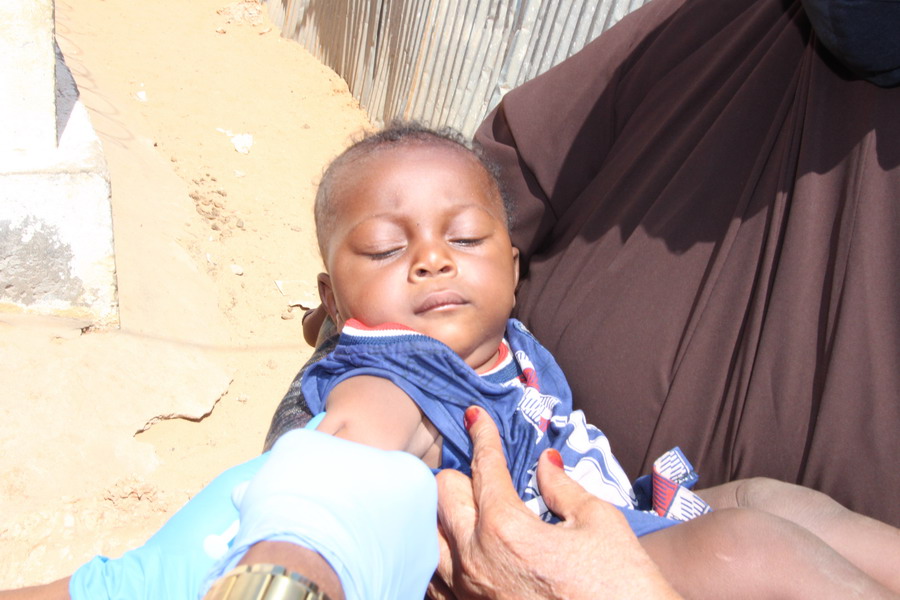 A child looks on as he receives a measles vaccine, Kismayo, October 2020
A child looks on as he receives a measles vaccine, Kismayo, October 2020
Following up with missed children
Health teams continue to search for measles cases and children who had missed the measles vaccine. Those who have missed the vaccines during the mass campaign are tracked regularly and are receiving an extra dose of measles vaccine irrespective of their previous vaccination status.
Routine immunization in Jubaland State: historically low with pockets of inaccessibility rendering immunization coverage far from expected
Historically, routine immunization coverage has remained low in Jubaland State. During 2019, the routine immunization coverage of Penta 1 was 71%; Penta 3 and IPV were 51%; and measles coverage was only 58% in this state.
2 districts (Hagar and Jamame) out of 5 in Lower Juba region are inaccessible, with no health/immunization services. In the accessible districts, there are some inaccessible villages and pockets where health care workers have only partial access to these areas.
Caregivers need to keep track of vaccines received
In Gulwade village in Kismayo, Maryan Abdi has a 3-year-old daughter who was recently diagnosed with measles. She explains that although her 6 children have received vaccines before, she isn’t sure if they received measles vaccines at all.
“It is important for parents to be informed of the vaccination schedule and its usefulness in protecting their children’s lives. We should also use innovative solutions in such challenging settings to keep track of those who have been vaccinated and children who are missing out. Children should not be denied access to vaccines whatever the operating challenges could be. This is the best way to protect them from preventable diseases,” says Dr Mamunur Malik, WHO Somalia Representative. “This matters for every Somali child, but even more so for the vulnerable ones living in difficult-to-reach locations.”
Meanwhile, Khadijo asks to share a key message with other Somali mothers and fathers: to avoid what she went through in life, by ensuring all children receive vaccines and seek timely treatment when they are sick.
New laboratory set up for measles confirmation in Kismayo General Hospital
In response to the surge in measles cases in the recent past, WHO provided support to the State Ministry of Health of Jubaland to establish a measles testing laboratory in the Kismayo General Hospital. The laboratory is equipped with the supplies required and an ELISA machine. Around 23 health workers were trained in case management and 3 laboratory personnel were trained to test for measles cases.
Note to editors:
The measles campaign was conducted in Kismayo in October 2020 with the generous financial support from the United Nations (UN) Central Emergency Response Fund (CERF) Anticipatory Funding.
Life-saving disease prevention and mitigation efforts continue in Somalia under anticipatory action framework
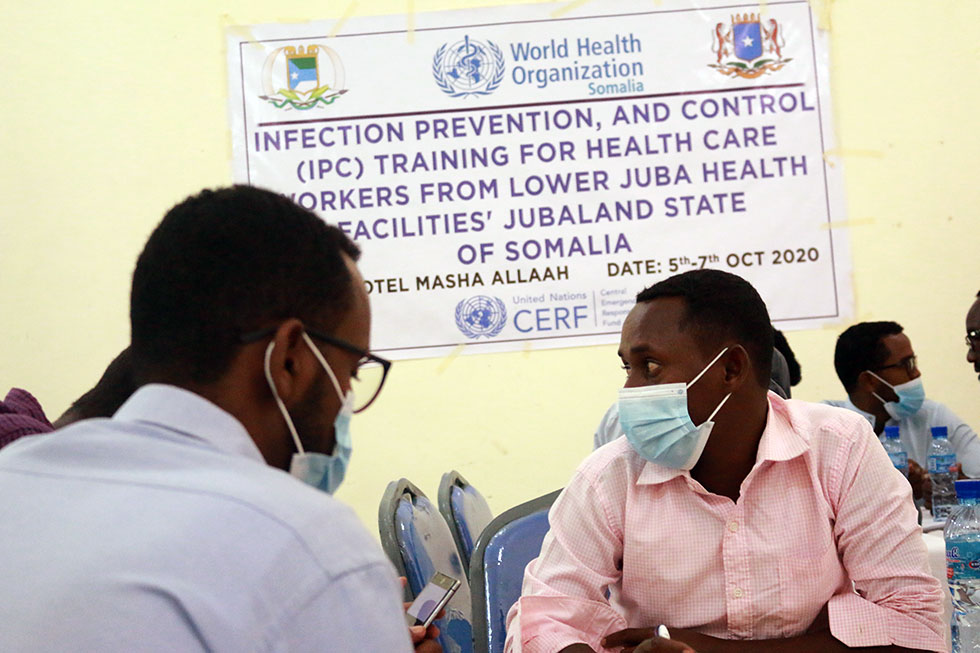 Health workers gaining skills at a training in infection prevention and control, in Jubaland State
Health workers gaining skills at a training in infection prevention and control, in Jubaland State
Every year, the rains gift Somali communities with much-needed water for their animals and agricultural activities. However, in many riverine areas in the south and central States, intense rains result in the Juba and Shabelle rivers overflowing. This causes floods, which destroy homes and roads among other assets and infrastructure, and exacerbate the spread of water-borne and vector-borne diseases, such as cholera and malaria.
During the first half of this year, flooding from the Gu rains affected around 919 000 people, 412 000 of whom were forced to flee their homes, according to the United Nations Office for the Coordination of Humanitarian Affairs. The UN Refugee Agency (UNHCR) and Norwegian Refugee Council (NRC) further state that more than 600 000 people were newly displaced by flooding in 2020. Additional rains and Hagaa flash floods recurring in the second half of the year added to this toll.
In order to prevent disease outbreaks and help affected communities in a quick and effective manner, the Central Emergency Response Fund (CERF) of the United Nations (UN) provided key support to the World Health Organization (WHO), and other UN agencies, to roll out a three-month project, titled the ‘Anticipatory Action Plan’ in 12 pre-identified districts. This project aimed to prevent the risks of preventable morbidity associated with flooding; strengthen early warning and rapid response to public health emergencies; and enhance the capacity of health care workers to respond to health emergencies.
Training sessions that support health workers
So far, since July 2020, 709 persons, including 219 women, received training in seven different topics. In September, 54-year-old Mohamed Olad Mohamoud, who runs the Yaka Health Centre in Yaka village of Qardho district, participated in a training run by WHO and funded by CERF. During the training, health professionals who work with the Federal Government and Puntland State, like Mohamed, learnt about communicable diseases and priority diseases that form part of the early warning alert and response network system (EWARN). They were shown how to report alerts of notifiable diseases, and informed about alert thresholds of priority diseases and surveillance performance indicators, such as registration. They also learnt about biological samples collection, packaging and shipment; how to analyze data and monitor trends of diseases; how to respond when there is a disease outbreak; and how to protect themselves from getting infections when managing patients.
“This training really helped me,” says Mohamed. “Actually, it will help us all perform our jobs better. The biggest thing I learnt is that if we do not detect, report and respond to some of the diseases in good time, they can spread fast and cause a large number of deaths. I also gained knowledge and skills on how to fill data in registers correctly and accurately, using reliable data, as well as how to follow up on disease trends and analyze them to stop the spread of diseases.”
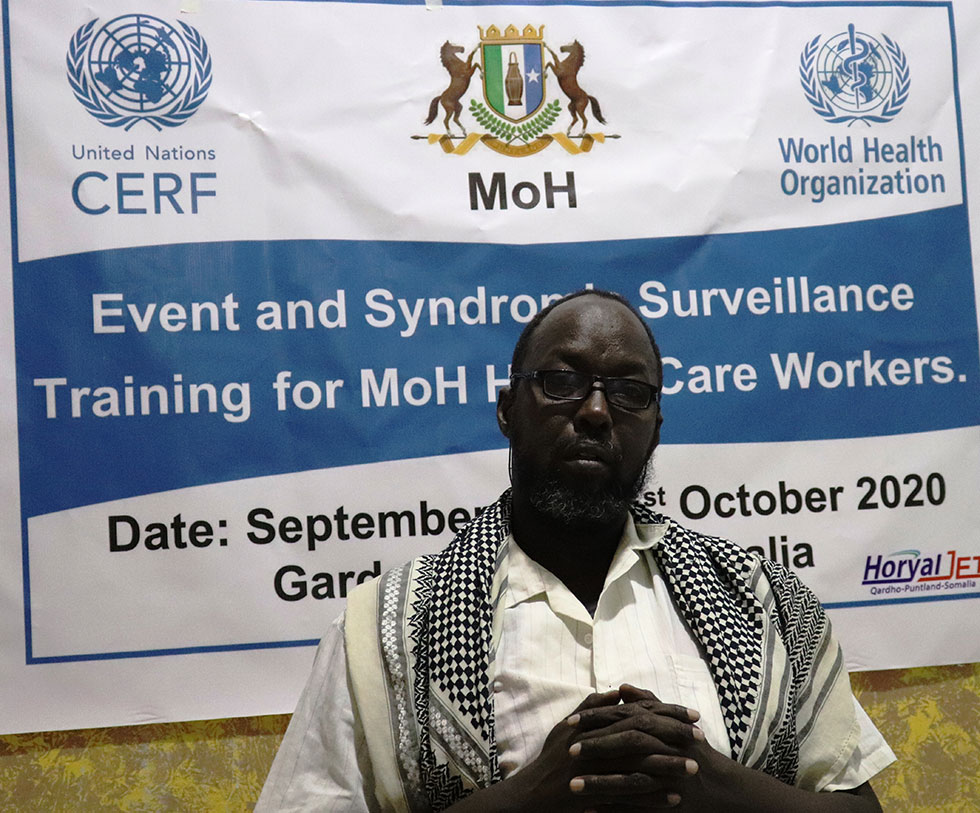 Mohamed attending a training on event and syndromic surveillance, conducted by CERF in Qardho, Puntland.
Mohamed attending a training on event and syndromic surveillance, conducted by CERF in Qardho, Puntland.
Sharing health messages to stop the spread of diseases
As part of the project, WHO supported the training and deployment of 200 community social mobilizers to enhance health promotion activities. Risk communication and community engagement activities were tailored to reach the general population, IDPs and host communities with health promotive messages.
An estimated 2 769 689 people were reached with health information in 12 target districts by the CERF Anticipatory Action Plan project, in collaboration with other initiatives.
Explaining how training sessions like these develop the capacity of Somali health professionals, Mohamed also added that the risk communication conducted under the project has been useful to local communities.
He reflects back to a case he cannot forget, where during a suspected outbreak of acute watery diarrhoea (AWD) in his village, in June 2020, 30 cases of AWD had been reported. One of the affected was an 8-month-old child, who was severely dehydrated and was brought to the Yaka Health Centre.
“We wanted to provide IV infusion to the child and refer him to another health facility. However, while we were trying to save his life, this young child passed away. This was the first child who died in the health centre since we upgraded it with community support. This made me really sad as these are preventable losses of life. We see that AWD outbreaks happen very often, and they affect many people, as our communities use dirty water in the berkats. If people had the right information about simple things like using clean water, it would really save lives.”
The work of WHO funded by CERF under the Anticipatory Action Plan framework aims at instituting early interventions for any impending health threat, such as disease outbreak, particularly in situations where data can reliably warn of a rapidly evolving or emerging health crisis and where a speedy and early response can make a big difference in preventing avoidable deaths and saving lives. WHO will continuously assess and monitor the impact of its early interventions in averting major disease outbreaks from preventable diseases such as cholera and measles through its ongoing work in capacitating health care workers for disease detection, prevention and control.
Technical note:
The CERF-supported Anticipatory Action Plan project aimed to address priorities identified in the assessments conducted by the Health Cluster and humanitarian partners on the floods that occurred early in 2020, and the Somalia Flood Response Plan (issued in June 2020). The project activated the community-based disease surveillance system in high-risk districts in Galmudug, Hirshabelle, Jubaland, Puntland and SouthWest States. As part of the project, WHO trained and deployed 100 rapid response and medical mobile teams; replenished emergency medical supplies to provide life-saving health care to 113 300 patients and enhanced risk communication and coordination activities. In addition, indoor residual spraying (IRS) campaigns were conducted in the target districts in efforts to minimize vector-borne diseases. The project targeted 170 869 direct beneficiaries, including 22 822 IDPs, in Galkayo and Hobyo districts in Galmudug state, Beletweyne and Jowhar districts in Hirshabelle state, Afmadow, Dolow and Kismayo districts in Jubaland state, Qardho district in Puntland, Zeylac district in Somaliland and Afgooye, Baidoa and Marka districts in South-West states.


